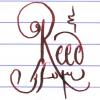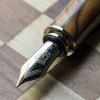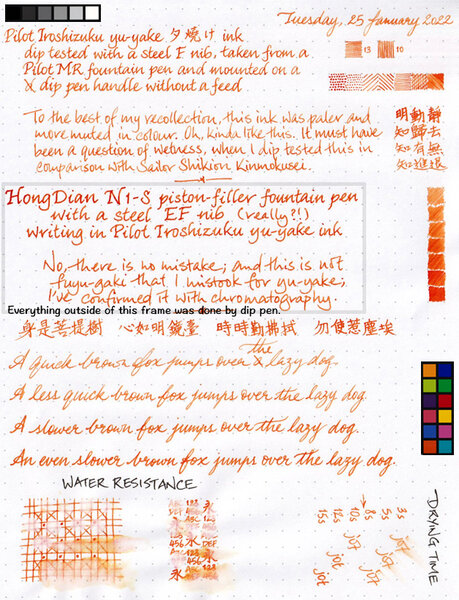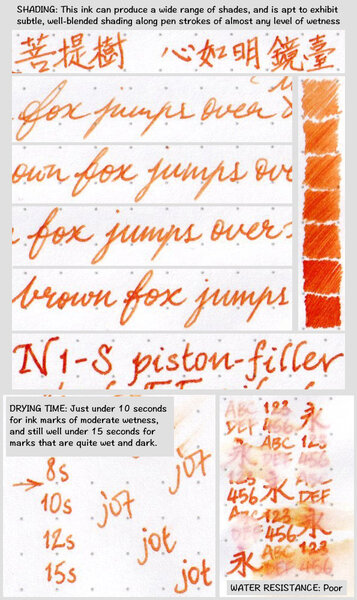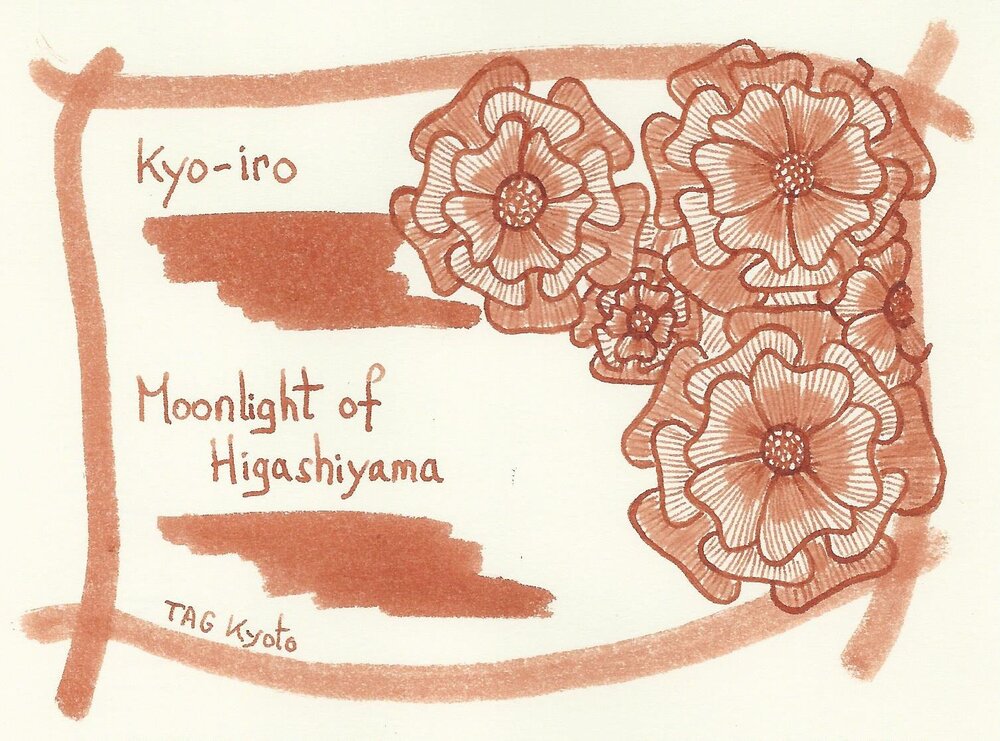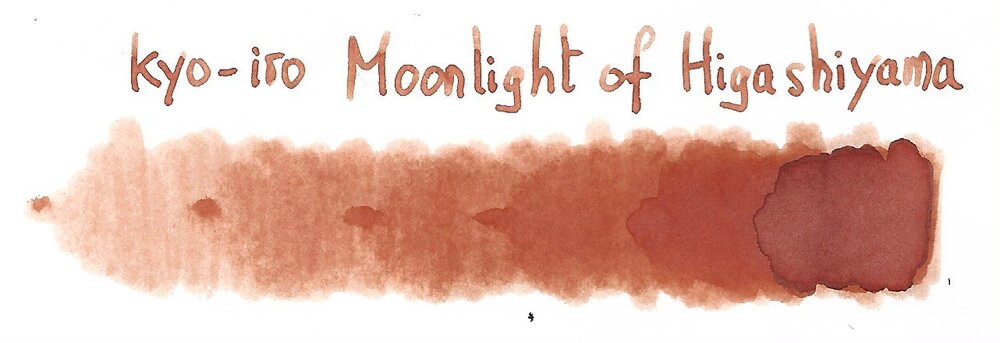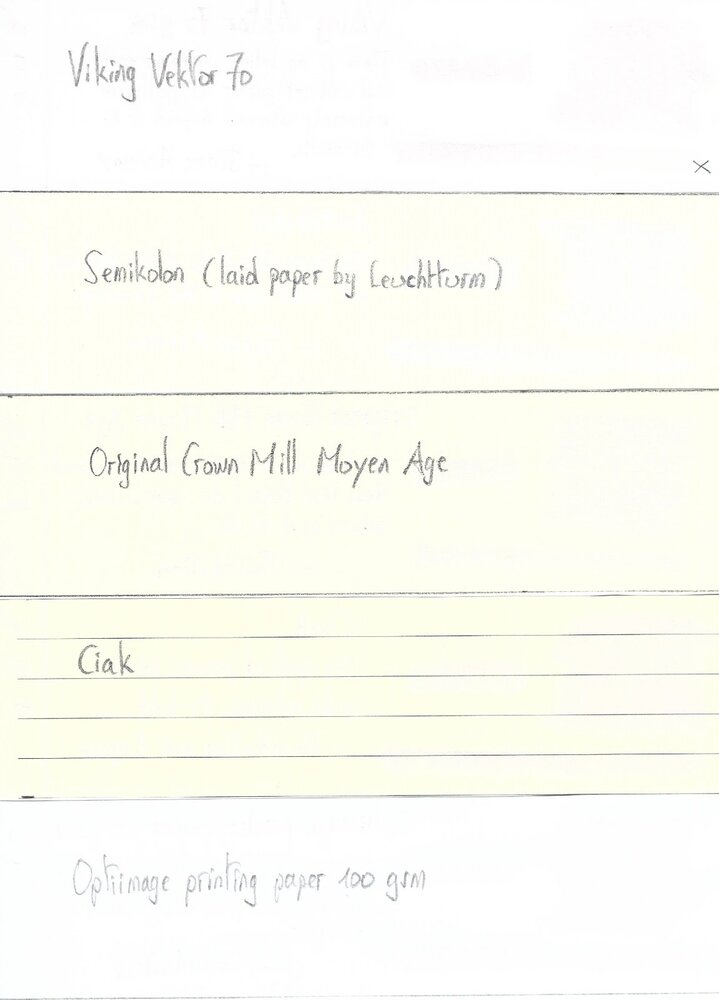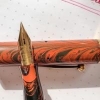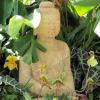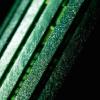Search the Community
Showing results for tags 'orange'.
-
KWZ Orange This is review #175. Part of the mystery ink blind testing on another website. This is a very, very joyous, wet, reddish/ coral orange (depending nib size, pen) with faint shading (M/ B dry Lamy Safari nib), zero water resistance and very long dry times on Rhodia. You nee...
- 20 replies
-
- kwz
- kwz orange
-
(and 2 more)
Tagged with:
-
Teranishi Guitar – Orchestra Tangerine Teranishi Chemical Industries – based in Osaka, Japan – was founded during the Taisho period around 1916, and got quite some fame as one of the earlier ink producers in Japan. For their 105th anniversary, the company introduced some stylish retro-inks,...
- 8 replies
-
- teranishi guitar
- orchestra tangerine
-
(and 2 more)
Tagged with:
-
De Atramentis Artist Orange This is similar to the Document line but has less of its properties. inks and can be mixed and matched with either Artist or Document lines. It's an anemic orange or a punchy yellow depending how you see it. It’s wet, lubrication slightly below average...
- 15 replies
-
- de atrementis
- artist inks
-
(and 3 more)
Tagged with:
-
Note: The Diamine Pumpkin comparison looks very similar in the poor scan, but is actually distinct from the Orange Indien. The ink is less red and more orange in reality.
-
The Ondoro is another of my Faber-Castell Design (FCD) pens. These FCD steel nibs are common across the entire design product range - Basic, Loom, Ambition, Ondoro & e-motion and have been impeccable in my experience. My first pen from the design series was an Ambition. I feel that the Ondoro is str...
- 32 replies
-
- faber-castell
- ondoro
-
(and 5 more)
Tagged with:
-
I just purchased and received on Ebay from a seller in Thailand an unusual Parker 51. The barrel and section are orange, the barrel is longer than that on a true standard 51, and the filling system is C/C, but takes International Standard("IS") C/C, not Parker versions (which are too thick). I pla...
-
Well said, from the Omas web site, here: OMAS is pleased to introduce the 360 SOLETERRE, a special creation realized in limited and numbered 360 pieces only, made to support education rights of children in Morocco, Ivory Coast and San Salvador, thanks to SOLETERRE.org For every 360 SOLETERRE purch...
- 8 replies
-
- omas 360 soleterre
- omas 360
-
(and 2 more)
Tagged with:
-
-
I've had this ink for years, but never gave it all that much love, because my last memory of it was that its colour is pale and muted, and thus unsuitable for use in Fine nibs. My relatively new HongDian N1-S came fitted with a steel EF nib (with no other option on offer, in case you're wondering) t...
- 10 replies
-
- pilot iroshizuku
- iroshizuku
-
(and 3 more)
Tagged with:
-
-
- pilot iroshizuku
- iroshizuku
-
(and 3 more)
Tagged with:
-
-
- pilot iroshizuku
- iroshizuku
-
(and 3 more)
Tagged with:
-
James Purdey & Sons Single Malt scented ink was released in 2018 by Montblanc as part of a series in collaboration with James A. Purdey, a gunmaker and hunting lifestyle brand. The ink surprised me! Single malt scented ink sounded at first like a (overpriced) gimmick and to some extend it is of cour...
-
TAG Kyoto – kyo-iro – Moonlight of Higashiyama TAG is a stationary shop in Kyoto (Japan) that produces some interesting soft watercolour-style inks. With the kyo-iro series they produce a line of inks that that are inspired by the city’s many beautiful and historic sights. Each...
- 15 replies
-
Pelikan Edelstein Mandarin In 2011 Pelikan introduced the Edelstein series of high-end inks, available in a variety of colours. The theme of the Edelstein concept is the gemstone - each ink corresponds to the beautiful colour of a gem. The Edelstein line of inks is presented in 50 ml high-value bo...
-
Robert Oster 1980 - Honey Bee Robert Oster is an Australian ink maker that is well-known for its unique range of colours. With this mini-series he gives us a conglomeration of colours inspired by the anything goes world of the 1980s. These inks fit my personal preferences: muted pastel-type...
- 6 replies
-
- robert oster
- robert oster 1980
-
(and 4 more)
Tagged with:
-
Going to be autumn soon, and being in New England it is something I eagerly look forward to. I am putting aside my brave adventuring into the world of murky grayish greens for the time being and going against my inner nature by exploring ORANGE. The story so far: received two samples from Goulet,...
- 17 replies
-

Ink Shoot-Out : Papier Plume Sazerac Vs Diamine Golden Honey
namrehsnoom posted a topic in Ink Comparisons
Ink Shoot-Out : Papier Plume Sazerac vs Diamine Golden Honey For no special reason, I have been using quite some ochre & orange inks this summer. While playing around with my inks, I noticed that Papier Plume Sazerac and Diamine Golden Honey seem to be quite similar oranges. This peaked my inter...- 9 replies
-
- ink shoot-out
- papier plume
-
(and 4 more)
Tagged with:
-
J.Herbin - Orange Indien La Société Herbin, Maître Cirier à Paris, was established in 1670. This makes J. Herbin probably the oldest name among European ink makers. Today, Herbin produces a range of beautiful fountain pen and calligraphy inks, writing instruments, gift sets and accessories. Herb...
- 10 replies
-
- j.herbin
- orange indien
-
(and 1 more)
Tagged with:
-
TACCIA DAIDAI (ORANGE) Review of a sample of Taccia Daidai received from Vanness Pens. Taccia inks are "born in California", but manufactured in Japan. This is a very nice orange color - well balanced and strong - not yellowy-orange or reddish-orange but a strong orange-orange. The ink flo...
-
I just saw a poster on another thread comment that they wouldn't buy another Pelikan without an ink window or some translucence in the barrel to determine ink levels. In looking at the photos of the M600 Vibrant Orange it made me wonder if the ink (especially a dark one) would be visible through th...
- 15 replies
-
- translucence
- ink window
-
(and 3 more)
Tagged with:
-
Hello All, I was looking on eBay and saw this Pelikanesque pen that is inexpensive and could be a good buy. Does anyone know who makes it? https://www.ebay.com/itm/NOS-PISTON-FILLER-FOUNTAIN-PEN-ORANGE-BLACK-M-NIB-MADE-IN-GERMANY-/142502157724
-
desaturated.thumb.gif.5cb70ef1e977aa313d11eea3616aba7d.gif)
Sailor Shikiori Kinmokusei (Four Seasons – Autumn: Gold Osmanthus)
A Smug Dill posted a topic in Ink Reviews
Another quickie review, on another 'four seasons' colours in the Sailor Jentle Ink line for which I came too late to the party, and missed out on getting it in a 50ml bottle at the old pricing. Colour: I love orange – especially when it's the colour of the garment I'm wearing, which means it's... -
As vis' might say, Sailor is a company that needs no introduction, at least around these parts. This ink is a member of the Jentle Four Seasons line of inks, these are ones that are fairly readily available in pens shops and online. Some explanation may be necessary regarding the Four Seasons seri...
-
http://inks.pencyklopedia.pl/wp-content/uploads/Diamine-Amber-nazwa.png Manufacturer: Diamine Series, colour: Amber Pen: Waterman Hemisphere "F" Paper: Image Volume 80 g / cm2 Specifications: Flow rate: weak Lubrication: good Bleed through: unnoticeable Shading: noticeable...
-
Ink Review: STIPULA CALAMO SAPPHRON I have wanted to try several of the Stipula Calamo inks for some time after hearing about them. The inks are handmade in Italy and come in this great 70mL bottle. The Review above was scanned, and the color is "washed out". The ink color is closes...


